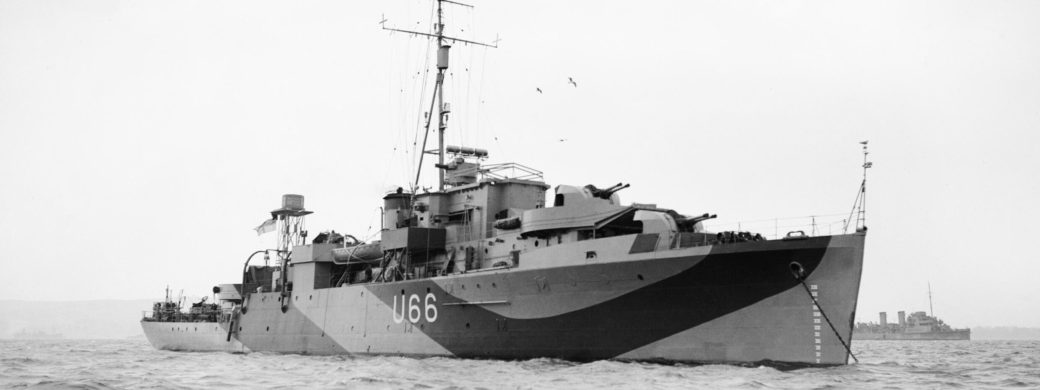In The Longest Campaign, Brian Walter gives us a complete account of the British maritime contribution to victory in World War II.
Pictured above is the sloop Starling from the highly successful British 2nd Support Group. Scroll down for a detailed account of maritime action in May 1943, and how battleships like Starling contributed to an Allied Victory.
May 1943 is traditionally viewed as the turning point in the battle of the Atlantic. In fact, this momentous month could better be described as the realization of a trend that had been growing for some time with the true turning point having occurred some two years before. Nevertheless, May did constitute an important victory and milestone in the Atlantic campaign. A number of factors contributed to this Allied success, which primarily revolved around vastly improved Allied defences.
In terms of numbers, by this time the Allies possessed roughly 400 escort vessels assigned to Atlantic operations of which more than 100 were usually at sea at any given time. Added to this were hundreds of anti-submarine patrol aircraft including increased numbers of very long-range types. In the winter of 1942, the Allies had only possessed six of these very long-range aircraft, but by May this number had increased to 49, all of which were equipped with improved 10-centimetre ASV Mark III radar. Added to this were another 72 10-centimetre radar-equipped Wellingtons, Liberators and Halifaxes that were earmarked for operations in the Bay of Biscay.
The Allies also benefitted from the introduction of improved weapons and warship-types. Some examples of the former included enhanced Asdic (sonar) and radar, more destructive depth charges, High Frequency Direction Finders (HF/DF) and the FIDO air-dropped anti-submarine acoustic homing torpedo. The best example of the latter included the introduction of escort carriers. Many of these escort carriers were deployed in newly formed support groups, which could be used to augment the defences of threatened convoys. Since a support group was not part of a convoy’s dedicated defence, it had greater latitude to hunt U-boats to their ultimate demise and not just suppress them.
Finally, the Allies benefitted from a major cryptic intelligence breakthrough as the codebreakers at Bletchley Park had recently broken the four-rotor Triton Enigma key used by the Germans to communicate with their Atlantic-deployed U-boats. The result of these combined factors was the sinking of 40 German U-boats during May, which more than doubled their highest monthly loss rate up to this point in the war (February 1943). This unsustainable loss rate prompted the Germans to temporarily withdraw their U-boats from the all-important North Atlantic convoy routes thus ceding this vital waterway to the Allies. The Germans would never again regain the initiative.
The Longest Campaign
By Brian Walter
The Longest Campaign is a complete, balanced and detailed account of the activities, results and relevance of Britain’s maritime effort in the Atlantic and off northwest Europe throughout World War II. It looks at the entire breadth of the maritime conflict, exploring the contributions of all participants including the Royal Navy, Royal Air Force and British merchant marine and their Commonwealth equivalents. It puts the maritime conflict in the context of the overall war effort and shows how the various operations and campaigns were intertwined. Finally it provides unique analysis of the effectiveness of the British maritime effort and role it played in bringing about the final Allied victory.
9781612008561 | Hardback | Casemate | £25.00| April 2020
SPECIAL OFFER: £20.00
Available to order through Casemate UK
Author: Brian E. Walter is a retired army officer from a combat arms branch with a Bachelor of Science Degree in Political Science and International Relations. A Distinguished Military Graduate and recipient of the Excellence in Military History Award from the U.S. Army Center for Military History and the Association of the United States Army, he has been a student of the British military during the Second World War for more than 30 years. He currently resides in his home state of Minnesota in the United States where he continues to write on a number of military and historical subjects.


 Follow
Follow